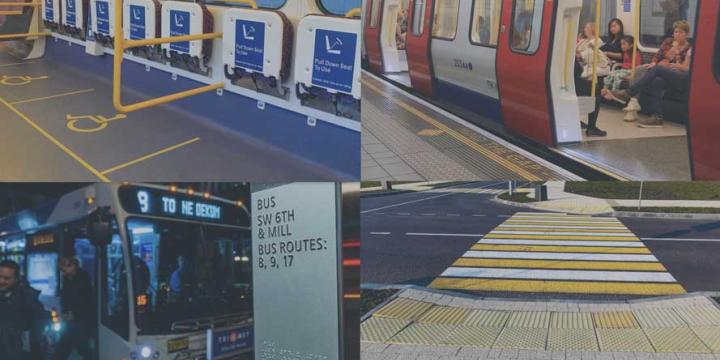Explore Urban Planning Courses
Discover hundreds of courses, with new courses added weekly.
Our most popular courses
Browse by software
Join thousands of urban planners on Planetizen Courses
Browse All Courses
Navigating the Ethical Landscape for AI in Urban Planning
Uncover some of the largest ethical issues related to using AI in urban planning and the steps cities around the world are taking to ensure fairness, honesty, and accountability as this revolutionary technology becomes more embedded in the modern world.
Just Suburbs: The New Frontier for Equity and Inclusion
Poverty is being displaced from central cities to suburbs. As a response, planners should look to strategies that create mixed-income neighborhoods—a place that everyone can call home.
Placemaking for Community-Based Organizations
Learn how community organizations can enhance or expand their impact on their beloved neighborhoods through placemaking practices.
Crime Prevention Through Environmental Design
This course discusses crime as an environmental justice issue and reviews techniques that successfully reduce crime and make communities safer and healthier through Crime Prevention Through Environmental Design (CPTED) theory.
Connecting Households to Sewer Systems
Delve into these intricate systems, where numerous components must work harmoniously to ensure smooth operation. This course outlines a proven process that can promote enhanced connectivity to sewerage infrastructure and systems.
The 21st Century Comprehensive Plan
Uncover the emerging and valuable qualities of the 21st century comprehensive plan that can be used to define visions for the future, including robust community engagement, crosscutting themes, and an accountable implementation program.
The Pedestrian Safety Crisis in the U.S.
This course discusses the social trends putting people at risk on U.S. streets and roads; why traffic safety is fundamentally a problem of systematic, structural inequality; and what U.S. planners and the public can do about it.
Resilience Planning for Floods
This course builds on the "Introduction to Resilience Planning" course and uses the approach presented there as the framework for addressing flood threats in communities.
Engaging At-Risk Youth in Arts and Culture Curation
Engaging youth in the revitalization of their own communities can impact their sense of ownership and pride and inform the way they show up and operate in that space.
Creative Placemaking for Minority Communities
This course will focus on strategies to effectively engage residents of marginalized communities in the placemaking process.
Women and Cities 4: Gender Equity in the Public Sphere
This course will outline the way in which women have occupied public spaces and the transition into a greater level of visibility for women in cities.
Women and Cities 5: The Feminist Future City
This final chapter speculates on what a feminist city could look like, recalling case studies and ancient examples that include contemporary contexts but also consider future needs for a more heart-centered city designed for everyone.
Introduction to Culture and Placemaking
Explore the urban theories that have prepared urbanists and planners alike to recognize culture and embrace of diversity as significant mechanisms for shaping the city and the fate of urban landscapes.
The Theory and Practice of Culture and Placemaking
Learn about the complex issues at play in the interaction between culture and place: the urbanization process, the historical significance of tools used by urban planners, early American urban theories, and the power of social movements.
Area-Based Location Optimization: Urban Green Space Selection
By the end of this course you will understand the basic principles of area-based location optimization and be able to solve the knapsack, threshold, and shape problems using LINGO software. The course also shows how to map the results of these skills in QGIS.
Solving Coverage and Location-Allocation Problems
Location-allocation problems involve locating supply sites and simultaneously allocating demand to those sites so the entire system is optimized. With this course, you will learn the basic principles of the coverage and location-allocation problems and be able to solve them using LINGO software and map the results in QGIS.
Working With Cross-Cultural Differences
At the end of this course, participants should have a basic understanding of some of the theoretical dimensions of culture that help us to understand cross-cultural differences.
Incorporating the Sustainable Development Goals into the Planning Process
This course focuses on the many ways planners can infuse sustainability into local planning activities and policies using the United Nations Sustainable Development Goals as a guiding framework.
Principles of Materiality, Responsiveness, Inclusivity, and Impact
In this course, students will take a deep dive into the AA1000 AccountAbility standard and its four Principles: Inclusivity, Materiality, Responsiveness and Impact and how they integrate to develop a very well thought out framework.
Planning for Racial Equity
This course introduces the concept of racial equity analysis in land use planning, the motives and rationales behind such analyses, and provides guidance for conducting analysis and review.

Start Learning with Planetizen Courses
Choose from affordable subscription options to access hundreds of online courses today.
Try Free Courses

























